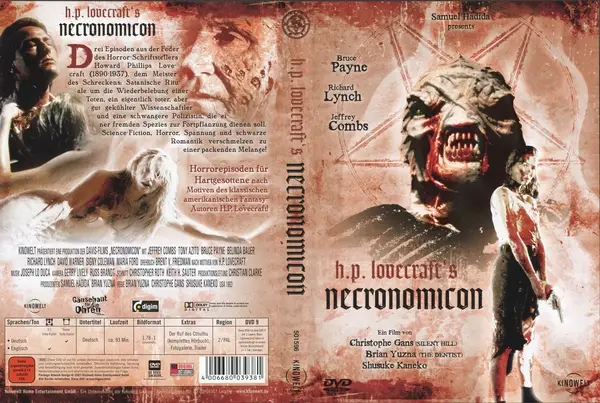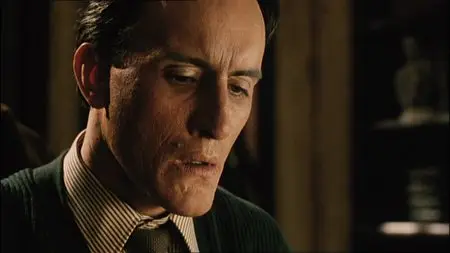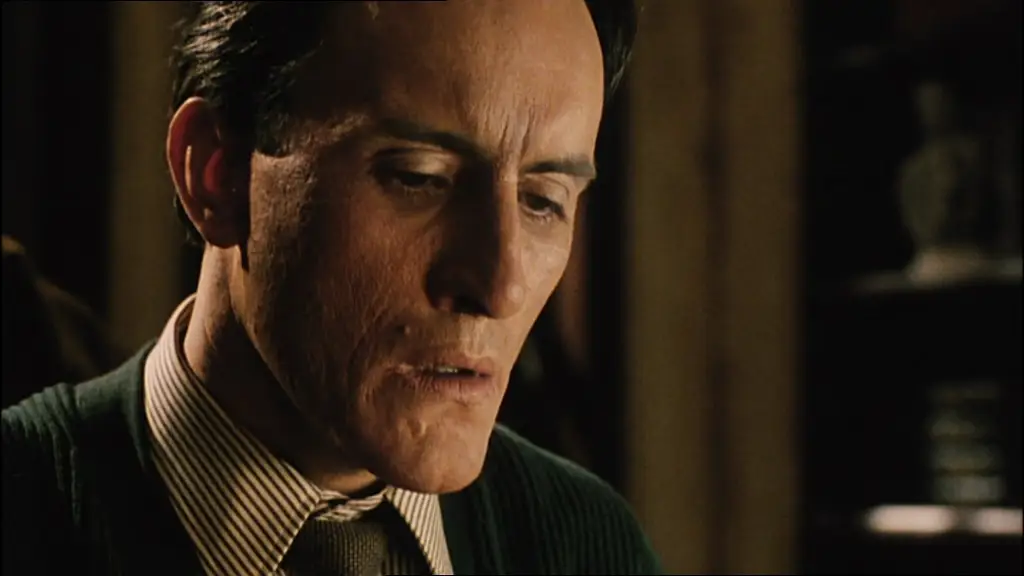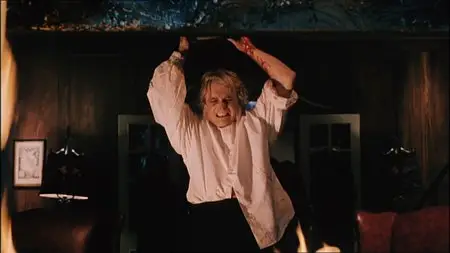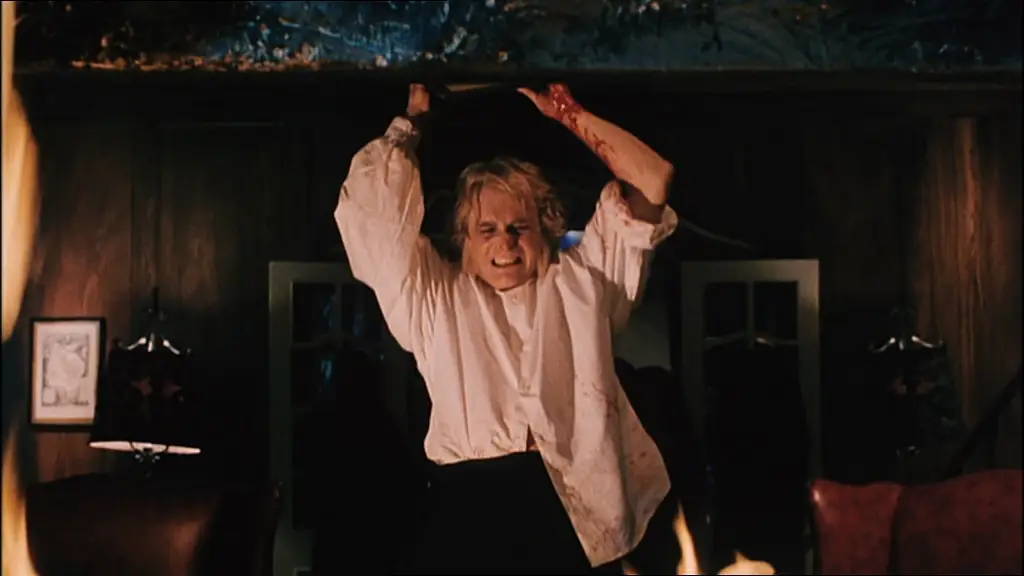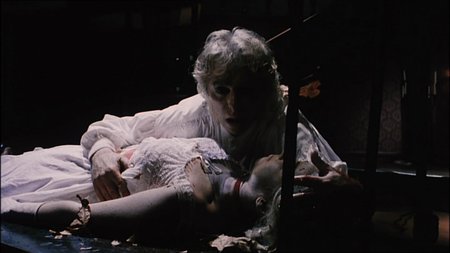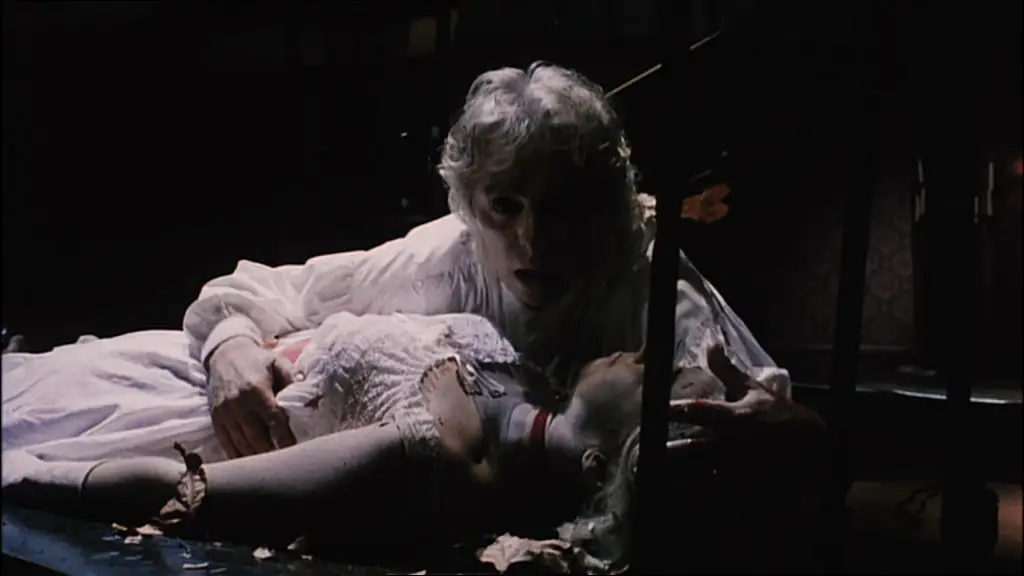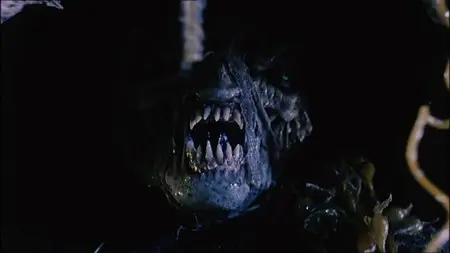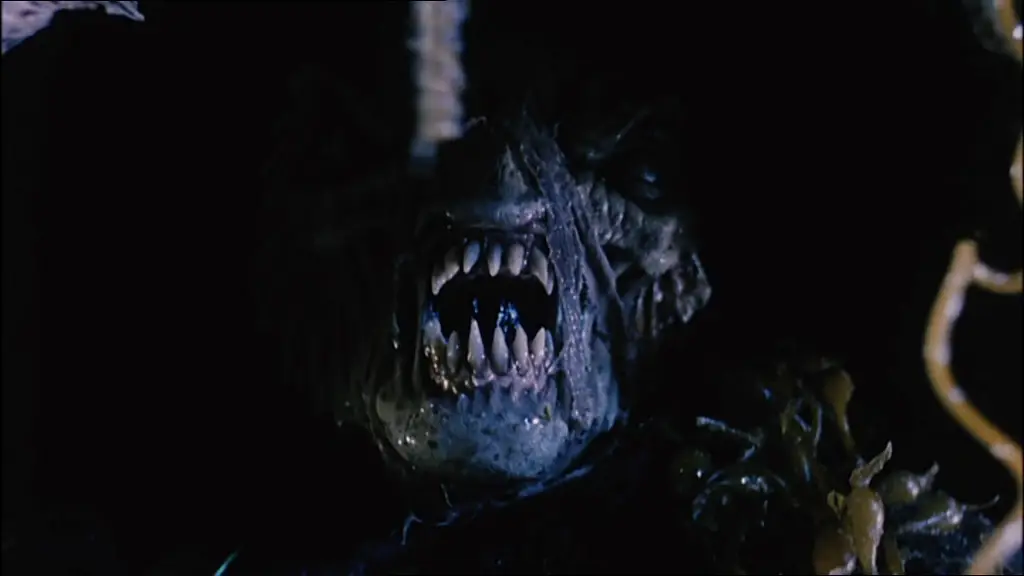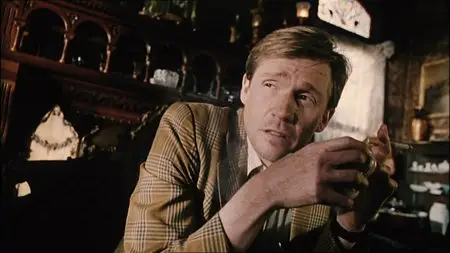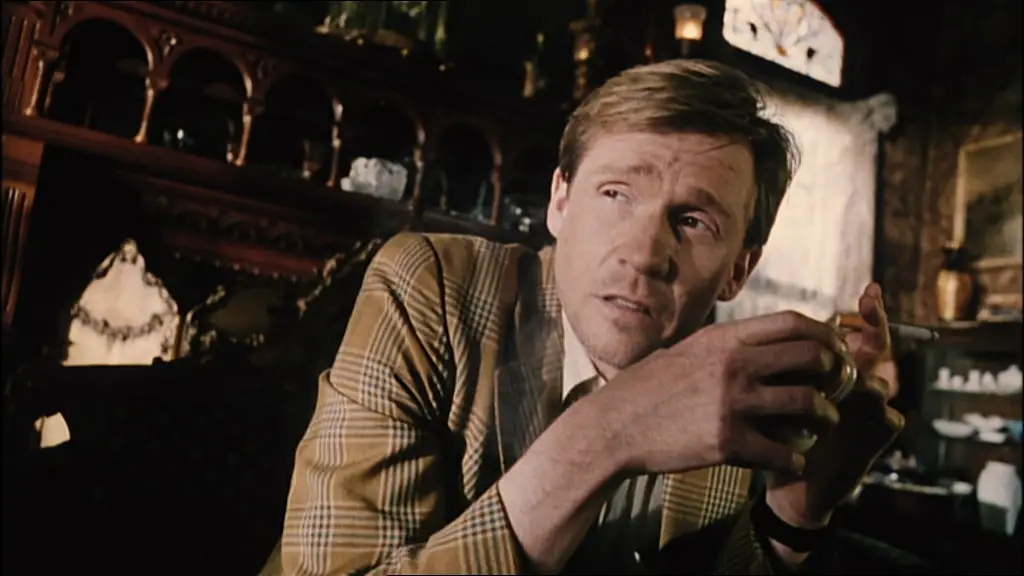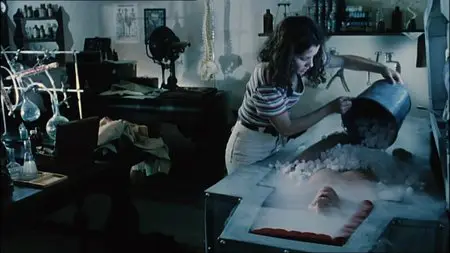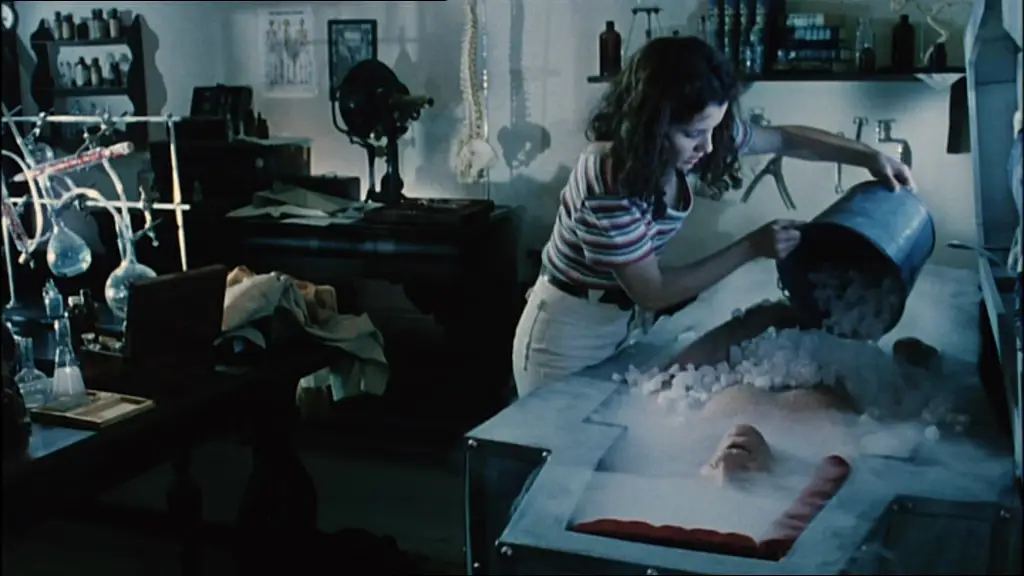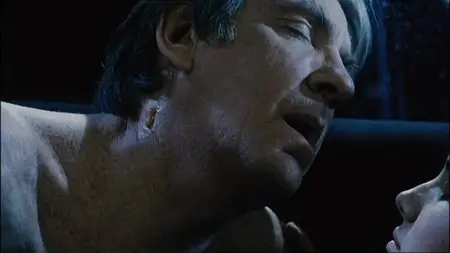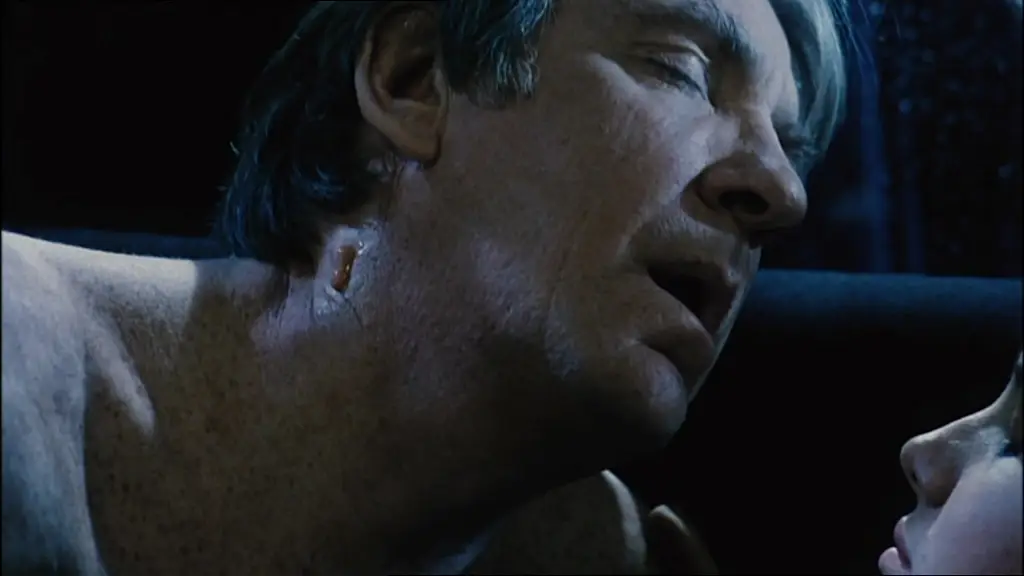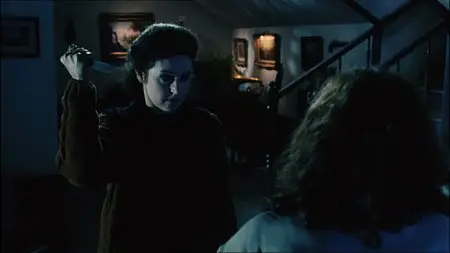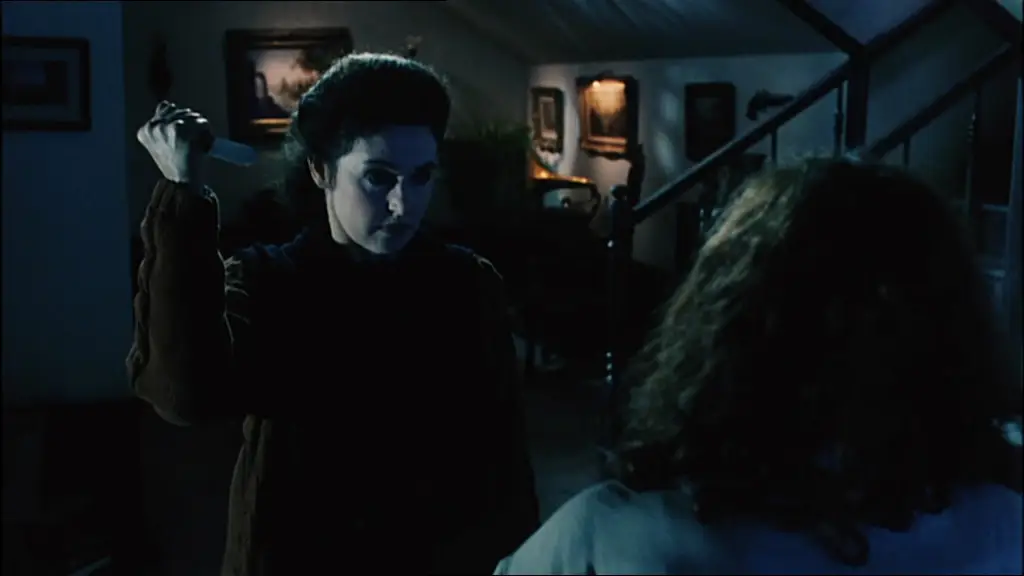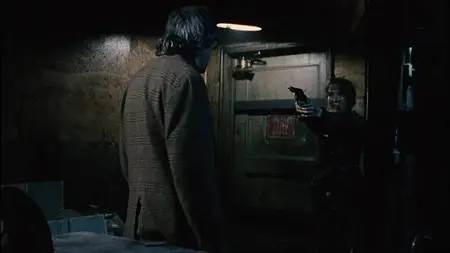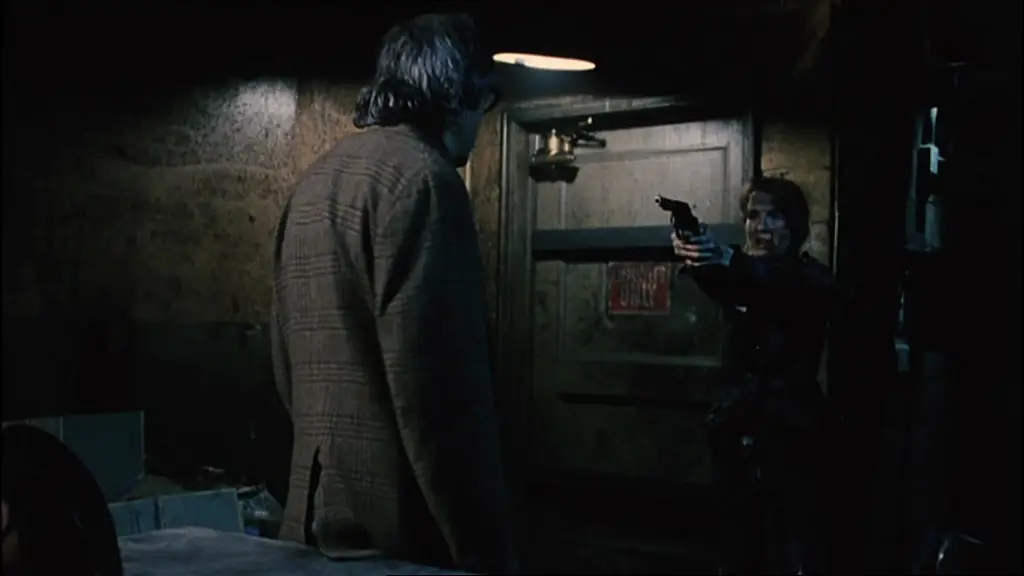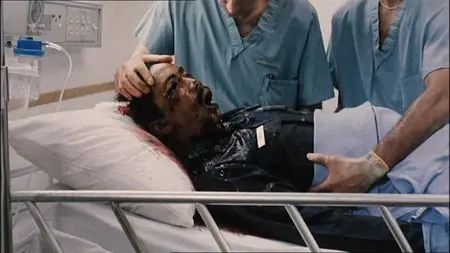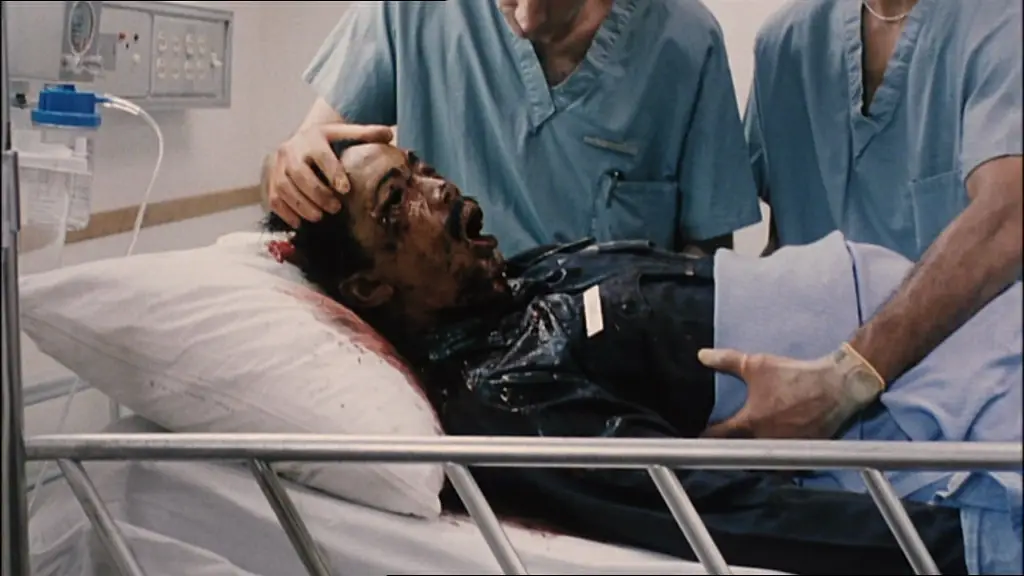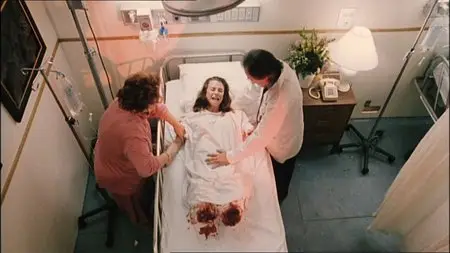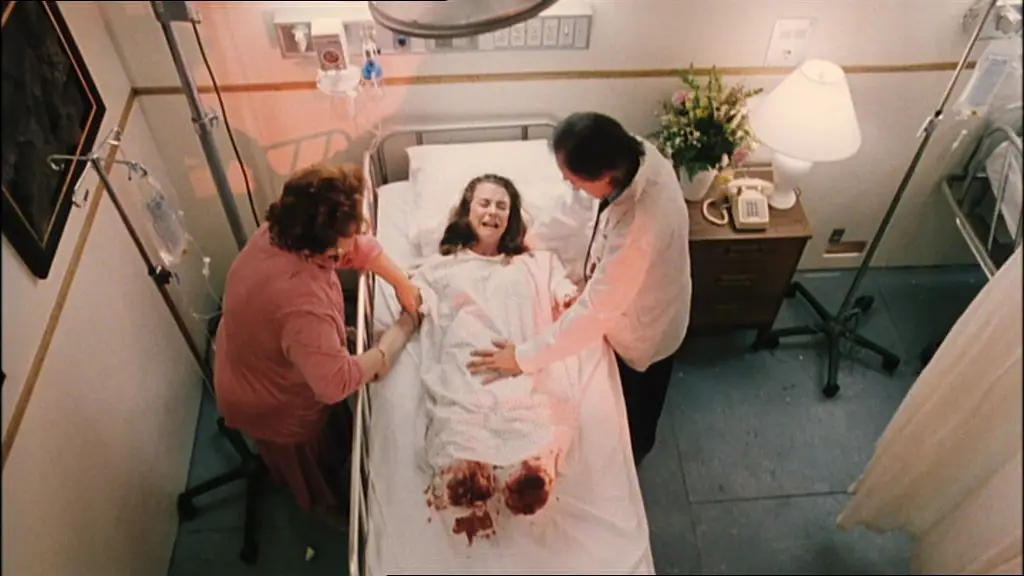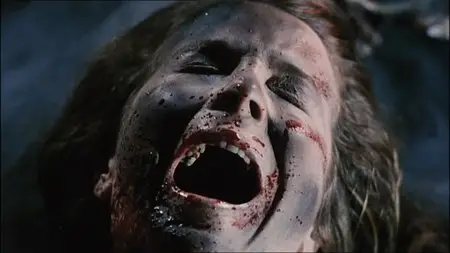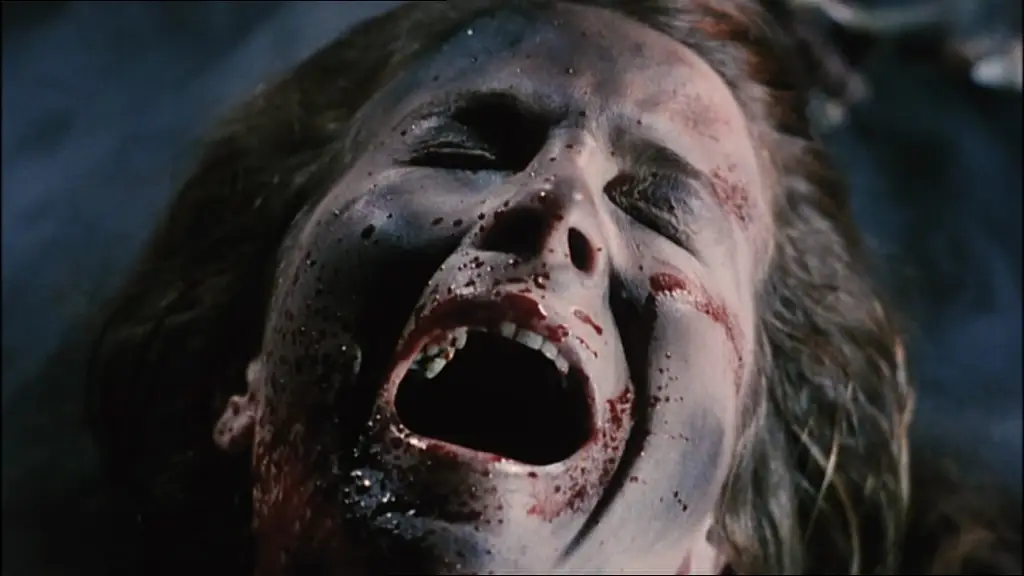Necronomicon (1993)
DVD9 | VIDEO_TS | PAL 16:9 | Cover | 01:32:38 | 6,99 Gb
Audio: English AC3 5.1 @ 448 Kbps; German AC3 2.0 @ 192 Kbps | Subs: German
Genre: Horror
DVD9 | VIDEO_TS | PAL 16:9 | Cover | 01:32:38 | 6,99 Gb
Audio: English AC3 5.1 @ 448 Kbps; German AC3 2.0 @ 192 Kbps | Subs: German
Genre: Horror
HP Lovecraft finds the book of the dead, the 'Necronomicon', and reads three stories - The Drowned, The Cold and Whispers…
IMDB
You see, I can blame Stephen King for his own bad movie adaptations. He’s had his hand in half of them, and he has the clout to step in on the rest. So I feel no pity for him. But poor H.P. Lovecraft was dead decades before anyone thought of trying to adapt his stories to the screen; he is wholly a victim of Hollywood, defenseless and spinning in his grave more often than not. So it’s a real pleasure to see a Lovecraft-based movie in which the filmmakers have actually, you know, read Lovecraft before.
This anthology opens with a framing story (directed by Brian Yuzna) in 1932 (in, one assumes, Boston) where a mysterious monastery is being visited by none other than Howard Philip Lovecraft himself — and Lovecraft is being played by none other than Jeffrey Combs, looking very much like H.P. in a prosthetic nose and chin. (The first time I saw this, I wasn’t paying attention to the opening credits, so I missed Combs’ name; I spent the rest of the movie saying, “Hmm, almost looks like Jeffrey Combs, but naaah.”) Lovecraft has discovered that a copy of the fabled Necronomicon, the “book of the dead,” is to be had somewhere here, in the library holdings of the sinister monks. Having visited before, he is welcomed in to browse an alchemical encyclopedia, but quickly sneaks off with a pilfered key to a reading room with a wall safe, in which is the brass-bound volume. What Lovecraft doesn’t notice as he takes it out and begins to read, is that the back of the safe is also a door, and it slowly opens…
The first story, “The Drowned” (directed by Christophe Gans of the live-action Crying Freeman) is set roughly in the 1950s (give or take a decade). The executors of the will of Jethro De La Poer have finally found an heir after 60 years, a nephew Edward (Bruce Payne, showing up this weekend in Highlander: Endgame) who’d been living in Sweden, to take the old family hotel on the edge of a New England cliff. After touring the sepulchral manse with the daughter of the executor, Edward settles in with a letter from Jethro, included in the will, written before Jethro threw himself from the balcony onto the rocks.
Seems that Jethro (Richard Lynch, seen in lengthy flashback) denounced God and burned the Bible when his wife and son were taken from him in a shipwreck. But nature abhors a vacuum; that night, he is visited by a seaweed-bedecked fishman (in Puritan garb, no less) who delivers — a copy of the Necronomicon! (Gotta get your money’s worth from those props.) In it, Jethro finds a spell for bringing back the dead, which apparently consists in its entirety of the famous couplet, “That is not dead which can eternal lie, / And with strange aeons, even death may die,” accompanied by “In his lair, Cthulhu waits dreaming.”
Jethro’s letter warns of the monstrous consequences of using the spell, but Edward has a tragic car accident in his own past which ended up with his beloved Clara drowning, so he finds the book where Jethro had hidden it…
Of all the stories, this is the most overtly Lovecraftian. The IMDb tries to link it to “The Rats in the Walls,” but while the familial name is the same and both stories do involve an industrial house, the story itself bears no resemblance to Lovecraft’s. It is, however, chock-full of other favorite Lovecraftian themes: ancestral guilt and ancestral secrets, Innsmouth-type fishmen, and several tentacled thingies, including a huge one that lives in the caverns beneath the house. (The best image is that of old Jethro’s revived son, suddenly revealing a mouth like an octopus’s, surrounded by tentacles.)
It almost seems like fan fiction, with so many homages held together by a culminating action scene.
The second story, “The Cold” (directed by Shusuke Kaneko, who went on to direct the three 90s Gamera revival movies), is obviously based on Lovecraft’s “Cold Air,” but I’m disappointed that a non-Hollywood director felt the need to make so many Hollywood changes to the story. Told from the present in flashback to a reporter looking for an explanation of forty years of murders, the protagonist is now a young girl Emily (Bess Meyer, and what do I recognize her from? Her single line in Heathers, that’s what!), coming to Boston in the early ’70s to escape an abusive stepfather (Gary Graham of Alien Nation fame). She rooms in the house of the reclusive Dr. Madden (David Warner), who keeps himself confined to his frigid third-floor suite, leaving the rest of the house to be run by his housekeeper Lena (Millie Perkins, who played Anne Frank in the movie). But through chance contact, a romance develops between Emily and Dr. Madden, despite a generation gap beyond anything Emily can imagine.
I hope you already see all of the problems. Adding abuse and a romance to Lovecraft is just plain silly; the “human drama,” after all, was about the furthest thing from Lovecraft’s mind. What we’ve got here is a lot of material added to expand the story out to a half hour, and much of it is stock Hollywood drivel. In addition to needing cold, Dr. Madden in this version also needs spinal fluid, thus accounting for the murders.
Of course, I’ve always thought “Cold Air” to be one of Lovecraft’s weaker early stories; it is, if you will, a one-trick pony, leading up to a “gotcha” ending that can be seen from miles away. If anything, this adaptation emphasizes the flaws of the original and adds many of its own. While there is a nifty little twist at the end, it’s far too little, far to late to justify the story. And it mystifies me why a foreign-language director would choose to do a story that relies so much on dialogue and exposition.
The third story, “Whispers” (directed also by Yuzna) is probably the least Lovecraftian of the bunch, at least in terms of details, even though the IMDb connects it to “The Whisperer in Darkness,” a story to which it bears not even a passing resemblance. Two cops, Paul and Sarah, are chasing a murderer, known as the Butcher, through the streets of Philadelphia; unfortunately, because they’re also arguing about whether they should have slept together and what they should do now that Sarah’s pregnant, they end up crashing the car. Paul’s unconscious body is dragged off by parties unknown; Sarah tries to track him and enters a warehouse which apparently descends straight into hell.
I said this was the least Lovecraftian of the lot in terms of detail, but perhaps it’s the most Lovecraftian in terms of pure, incomprehensible horror. Sarah’s descent is framed in a fluid reality where nothing is as it seems; there’s an immense horror waiting around the periphery of this story, seen dimly in the intensely horrific imagery shown us, but far too big to be contained on the screen. It’s a nightmare world which exploits Sarah’s twin fears of motherhood and of losing the baby, of losing her partner, of being helpless and exploited by something she can’t even imagine.
Yes, I know that’s a terribly vague description, and purposely so. What Yuzna shows us here is a string of terrifying images, profoundly disturbing in their alienness and irrationality. This is, I think, a true successor attempt to Lovecraft, who in his later years tried to indicate on the page a cosmic horror that could never be contained and described in words. The true horror is the one which can never be tamed by comprehension; it always lies beyond those limits. While he probably would have run for a bucket, I think Lovecraft would have approved of this one.
A final point: The three stories have their own faults and strengths. The framing device is also clever. However, as you may have noticed, the framing device doesn’t fit the stories. All three of the tales are set in eras after that in which Lovecraft is reading them. While an early line, about the Necronomicon revealing both the past and the future, was probably supposed to band-aid this problem, it doesn’t work. All three stories contain the Necronomicon (even though it’s only a briefly-seen bit of set dressing in the third), but none of them actually reveal the horror said to be within its pages. It’s a clever framing device (and Combs does a wonderful job as the Yankee Gentleman — who else deserves the honor?), but I wish it had been used more appropriately.
Nevertheless, compared to the in-name-only Lovecraft adaptations which have somehow gotten themselves made, this is a beautiful little movie. It’s reawakened my desire to re-read Lovecraft, something which no other Lovecraft movie has done; that’s got to say something.
Special Features:
- Trailer German/English
- Photogallery
- The Call of Cthulhu - Audiobook (in German w/o subs, 87 mins)
- Trailers (in German w/o subs)
Many Thanks to Original uploader.
If you want to download it, but found out that links are dead,
just leave a comment or PM me!
just leave a comment or PM me!
No More Mirrors.



